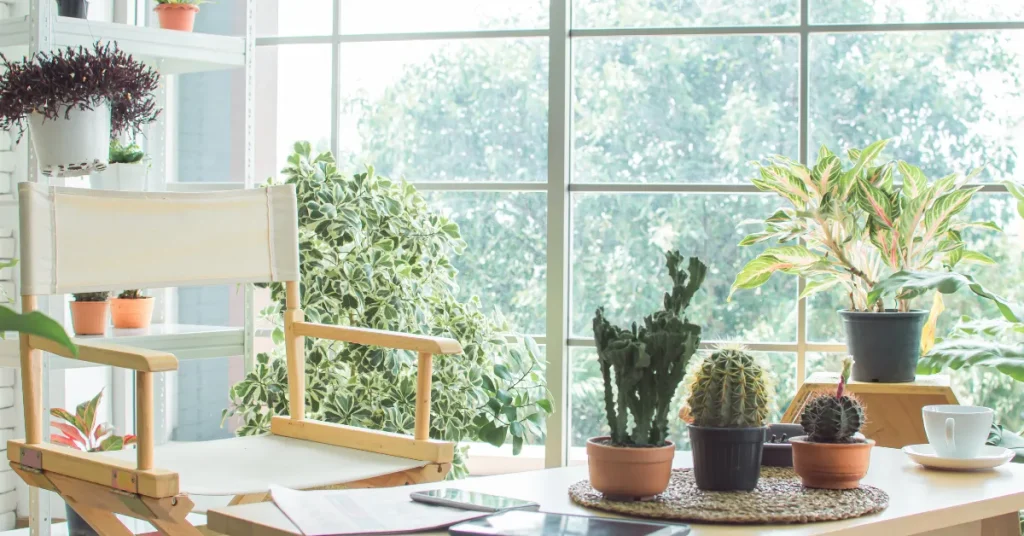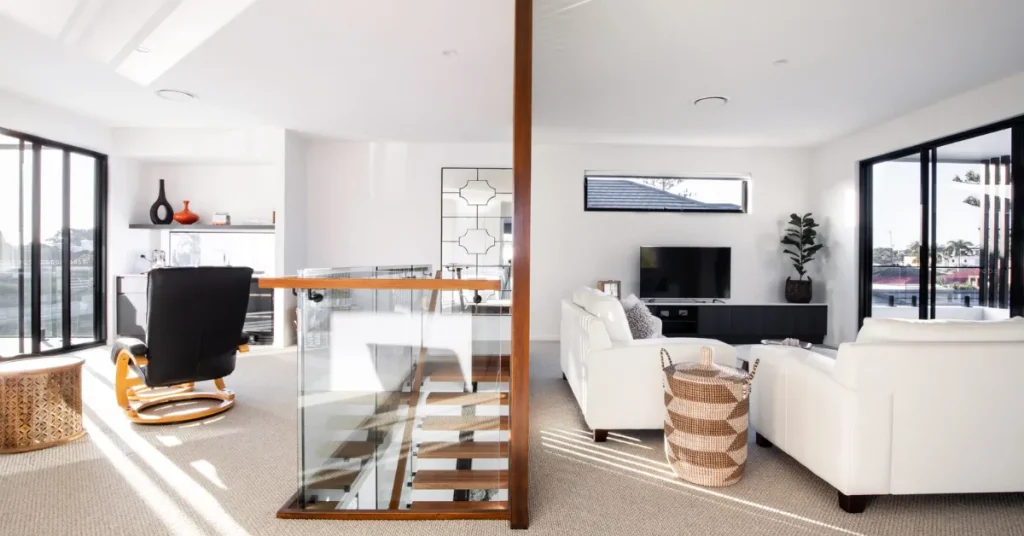A window seat should be at least 18 inches deep to provide comfortable seating. Ideally, a depth of 20 to 24 inches is more comfortable for lounging.
Creating the perfect window seat can transform a simple bay window into a cozy nook that beckons you to curl up with a good book or sip your morning coffee. To achieve the ultimate comfort and functionality, a window seat’s depth plays a critical role.
Striking a balance between spaciousness and practicality ensures that the seat is both inviting and structurally sound.
Whether you’re planning on building a new window seat or revamping an existing one, understanding the importance of depth will set the foundation for a delightful retreat inside your home.
By adhering to suggested measurements, your window seat will not only look appealing but also provide the ergonomic support needed, making it the go-to spot in any room.

Essentials Of Window Seat Design
Welcome to the world of interior design where comfort meets aesthetics in the form of the window seat.
Not only do these cozy nooks offer a quaint spot to relax, but they also enhance the charm of any room. Before embarking on the journey to create the perfect window seat, let’s explore the essentials of window seat design.
Defining The Purpose
Understanding the function behind your window seat is crucial. Will it be a sun-soaked reading corner? Perhaps a snug place for naps? Or maybe an extra spot for guests? Knowing this helps determine the size and features.
- Reading nook: A seat with space for books and a comfortable backrest.
- Resting area: A deeper seat for lounging and possibly including pillows.
- Entertaining space: A wider seat with room for multiple people.
Core Principles
Core design principles ensure a blend of functionality and form. Balance these for a window seat that invites relaxation and complements your space.
| Aspect | Details |
| Comfort | Pillows and cushions for support |
| Proportion | Size in harmony with the room |
| Style | Materials and colors matching the room’s decor |
| Storage | Built-in spaces for items to avoid clutter |
Deep window seats allow full relaxation. Shallower seats are ideal for dining areas or entryways. Combine these core principles with the intended purpose, and you’re well on your way to designing the perfect window seat.
Dimensions Matter for Window Seat

Creating the perfect window seat involves more than picking pretty fabrics. The size of your seat is vital for comfort and use.
Getting the dimensions right turns a basic nook into a cozy retreat. Let’s explore how deep a window seat should be for the ultimate relaxation spot.
Standard Depth Measurements
A well-crafted window seat marries form with function. Standard depth for a window seat is generally between 16 and 20 inches. This range fits most users comfortably. The depth ensures enough space for cushions while allowing easy access to the seat.
| Type | Depth (in inches) |
| Without Cushions | 16 to 18 |
| With Cushions | 18 to 20 |
| Sleeping Area | Up to 30 |
Adjusting Depth For Functionality
The intended use shapes the seat’s size. For reading and lounging, a standard depth suffices. Yet, you might prefer a deeper seat for napping or extra storage.
- A depth of 18 inches caters to both sitting and decoration.
- A depth of 20 inches or more adds comfort for extended lounging.
- For multipurpose use, consider adjustable depth with removable back cushions.
Remember to measure your space and the users’ needs when deciding on the depth. Keep pathways clear and maintain harmony with room aesthetics. With these measures, your window seat will be a cherished alcove in your home.
Comfort Considerations
Creating the perfect window seat blends style with comfort. It’s a cozy nook for reading, relaxing, or enjoying a sunny view. Proper design ensures it’s both inviting and functional.
When envisioning a dreamy window seat, comfort tops the list. This special spot should welcome you for hours. The right depth makes all the difference.
Cushioning And Ergonomics
Optimal cushioning transforms a hard bench into a soft sanctuary. Aim for cushions at least 2 inches thick, balancing softness and support.
Ergonomics dictate a seat depth allowing feet to touch the floor while backs rest against the window. Generally, 18-20 inches deep fits most adults comfortably, minus the cushion thickness.
- Adequate cushioning minimizes pressure points.
- Seat depth must complement cushion height for optimal comfort.
- Choose durable, comfortable fabric to withstand daily use.
Influence Of Window Design
The window itself influences depth. Consider sill height and width. Ensure the seat aligns nicely below the window, creating a harmonious look. Ideally, aim for a seat that’s flush with the window sill.
| Window Type | Recommended Depth |
| Standard Window | 18-20 inches |
| Deep Sill Window | 20-24 inches |
| Bow/Bay Window | Custom depth to fit |
Measure the window from wall to sill to assess ideal depth. Take note of window handles or locks that might affect seating space. You want enough depth for comfort without obstructing the window’s function or aesthetic.
Customization And Adaptability
Designing the perfect window seat involves more than picking a style. It hinges on the depth that fits your space and lifestyle. A window seat that adapts and caters to the preferences of various users is not just a seat.
It becomes a cherished nook for relaxation and enjoyment. Let’s explore how customization and adaptability play a crucial role in creating a window seat that everyone loves.
Tailoring To User Preferences
User preference is key in determining the depth of your window seat. The ideal window seat reflects the primary user’s needs and comfort. Consider body size, intended use, and cushion preferences to get the dimensions just right.
A deep seat allows for stretching out, while a shallower one supports upright activities like reading.
- Measure twice: Account for the cushion when measuring depth.
- Versatile cushions: Choose adjustable or removable back cushions.
- Accessible storage: Depth impacts under-seat storage accessibility.
Flexible Design For Multiple Users
Catering to everyone means considering a flexible design. A window seat with an adjustable depth can serve multiple users with ease. Think about a window seat that transforms from a cozy reading spot to a daybed.
Sliding mechanisms or removable backrests are practical solutions that enable a window seat to accommodate different users’ preferences.
- Sliding seats: Seats that extend for lounging or retract for sitting.
- Removable backrests: Change the depth easily for different users.
- Durable materials: Ensure adaptability doesn’t compromise stability.
Materials And Durability
A window seat adds charm and functionality to your space. The materials and durability are crucial. They guarantee your window seat is comfortable, stylish, and long-lasting. Let’s explore the essentials.
Choosing The Right Fabrics
Selecting the perfect fabric for your window seat covers more than just color and pattern. It’s about finding the right blend of aesthetics and endurance. Ideal fabrics can handle direct sunlight without fading. They resist wear and tear from frequent use. Think about these options:
- Cotton: Easy to clean, durable, comes in many patterns.
- Vinyl: Mimics leather, cleans easily, good for high-traffic areas.
- Microfiber: Soft, stain-resistant, ideal for a cozy spot.
- Wool: Robust, warm, and rich in texture for an elegant touch.
Supportive Structures
A stunning window seat must have a sturdy base. It needs to support the weight of people without wobbling or creaking. Here is what to consider:
| Material | Benefits |
| Plywood | Strong, gifts a smooth finish. |
| Hardwoods | Lasting beauty, supreme strength. |
| Particleboard | Cost-effective, good for framing. |
| Metal Frames | Sleek look, excellent durability. |
Combine these with quality screws and joinery techniques to ensure your window seat lasts for years.
Integration With Room Decor

Creating a window seat that blends seamlessly with your room’s decor requires thoughtful consideration of both style and dimensions. An ideal window seat should not only offer comfort but also enhance the aesthetic appeal of your room.
The depth of your window seat has a significant impact on its integration within the existing decor of your room.
Aesthetic Harmony
The harmony between your window seat and the rest of the room’s design elements is crucial. A well-integrated window seat appears as a natural extension of the room. To achieve this, consider the colors, textures, and materials already present in the space.
Think about the visual weight of your window seat compared to other furniture. Ensure the seat’s depth allows for ample cushioning without overwhelming the space.
Maintaining Style And Function
Window seats serve as both a cozy nook and a functional piece of furniture. They can offer extra seating, storage, or even a place to lie down and read. It’s essential to strike a balance between style and practicality.
- Ensure sufficient depth for comfortable seating.
- Consider storage options, like drawers or cabinets underneath.
- Use fabrics and materials that complement the room’s decor.
For seamless decor integration, tailor the depth of your window seat to align with the room’s functionality.
A depth of 18 to 20 inches typically works well for both adults and children. This size allows enough space for most people to sit comfortably with a backrest.
By prioritizing aesthetic harmony and maintaining the balance of style and function, a window seat becomes an enchanting addition to the room.
With these design principles in mind, your window seat will not just offer a place to rest but also enhance the overall beauty and utility of your space.
FAQs About How Deep Should A Window Seat Be
What Is The Ideal Depth For A Window Seat?
A comfortable window seat should ideally be 18 to 20 inches deep. This depth allows ample space for most individuals to sit without feeling cramped, striking a balance between comfort and practical space usage.
Can Window Seat Depth Be Customized?
Yes, window seat depth can be customized to suit personal preferences or specific spatial constraints. While the standard is around 18 to 20 inches, modifications can be made to fit the user’s needs and the existing room layout.
Does Seat Depth Affect Window Seat Design?
Seat depth plays a crucial role in window seat design. It influences both comfort and visual appeal, impacting how the seat integrates with the window and the room. Proper depth ensures a seat is both functional and aesthetically pleasing.
What Factors Should Determine A Window Seat’s Depth?
Factors determining a window seat’s depth include the window’s size, room’s layout, intended use, and cushion thickness. Additionally, the height and comfort preferences of the primary users should be considered to tailor the seating experience.
Conclusion
Choosing the perfect depth for your window seat enhances comfort and aesthetics. Typically, 20 inches serves most adults well.
Remember, cushioning can affect seating depth. Tailor your window seat to match your space and style for the ideal cozy nook.
Personalize it; make it yours.
Resources:
1. https://www.livingetc.com/ideas/window-seat-ideas
